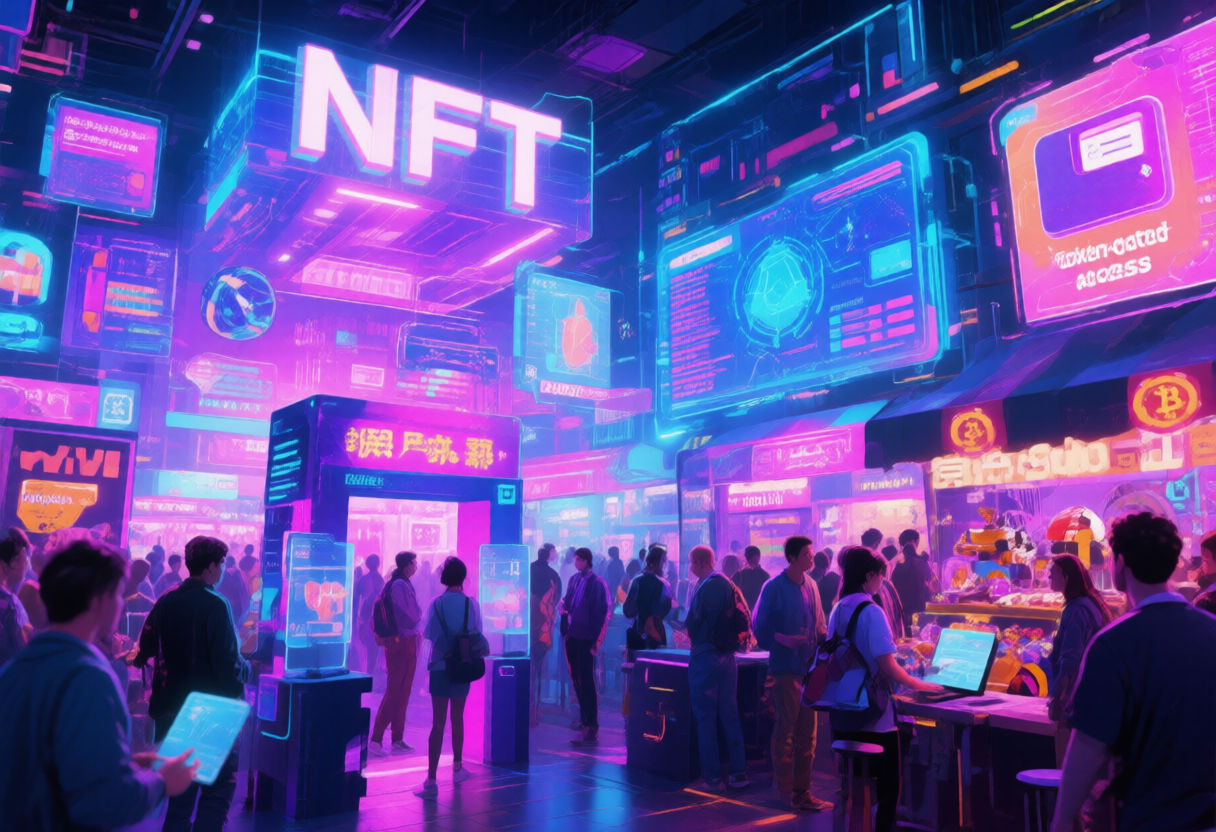
tl;dr
In Q3 2025, NFTs experienced a significant rebound, shifting from speculative art to utility-driven assets. Trading volumes hit $1.58 billion, with sports NFTs and loyalty programs leading growth. Technical upgrades like Ethereum's Dencun upgrade and Solana's compression tech reduced costs, while wa...
**NFTs Rebound in Q3 2025: From Speculation to Utility-Driven Growth**
After years of stagnation and waning interest, NFT trading activity showed a notable revival in Q3 2025, signaling a shift from speculative art and blue-chip collectibles to utility-focused assets. This resurgence, driven by technical advancements, evolving user demand, and a reimagining of value, marks a pivotal moment for the NFT ecosystem.
### **A Shift in Focus: Utility Over Status**
The NFT market’s center of gravity has moved away from high-profile "profile picture" (PFP) projects and toward cheaper, utilitarian use cases. Sports-linked NFTs, loyalty programs, and token-gated access have emerged as key drivers, with sales volumes and transaction counts hitting all-time highs. Q3 2025 saw NFT trading volume surge to $1.58 billion, with 18.1 million sales—surpassing previous records. Sports NFTs, in particular, experienced a 337% quarterly increase, driven by scheduled utility, access benefits, and recurring engagement.
This shift reflects a broader reorientation: fees and distribution mechanisms now define growth, not just speculative hype. Ethereum’s EIP-4844 upgrade, which slashed data costs for Layer 2 (L2) rollups, and Solana’s compression tech have made mass issuance affordable, enabling new use cases. Meanwhile, Bitcoin inscriptions—though volatile—have carved out a niche for scarce collectibles, tied to mempool cycles and miner revenue.
### **Technical Upgrades Power the Recovery**
Ethereum’s Dencun upgrade catalyzed a significant drop in L2 transaction fees, pushing activity to chains like Base, where gasless or sponsored mints became viable. Fees fell by over 90%, with Base emerging as a distribution hub. Solana, meanwhile, leveraged compression to reduce costs for loyalty programs, with 10 million compressed NFTs priced at ~7.7 SOL and median fees near $0.003. These innovations lowered barriers to entry, enabling broader adoption.
Bitcoin inscriptions, though less mainstream, gained traction as a collectibles market, with over 80 million inscriptions by early 2025. While their value fluctuates with fee markets, they highlight the enduring appeal of scarcity in the NFT space.
### **Distribution and Wallets Drive Adoption**
User onboarding hurdles have been mitigated by advancements in wallet technology. Embedded passkeys and sponsored fees—supported by platforms like Coinbase Smart Wallet and Phantom—have streamlined interactions, particularly on chains like Base and Farcaster. Phantom’s 15 million monthly active users (as of January 2025) underscore the importance of mobile-first UX in scaling NFT adoption.
This shift has also influenced creator strategies. With L2s and Solana offering cost-effective tools, artists and developers are prioritizing distribution math over fee profiles. The rise of social-driven funnels, such as Zora’s mass-mint cadence, further underscores the role of community and culture in driving engagement.
### **Royalties and Marketplaces Evolve**
Creator revenue models have undergone significant changes. Royalty rates, once a cornerstone of NFT economics, collapsed after marketplace wars made them optional. However, enforcement-aligned platforms like Magic Eden and Yuga Labs’ Ethereum marketplace have created premium lanes for brands that can enforce royalties. This bifurcation has led to a dual market: low-take-rate primary sales and IP deals dominate, while walled gardens cater to high-margin drops.
Marketplace dynamics remain fluid, with Solana’s Magic Eden and Tensor vying for dominance. These shifts, driven by incentive structures, highlight the need for creators to diversify distribution strategies rather than relying on a single platform.
### **The Road Ahead: Scenarios and Risks**
The NFT market’s trajectory hinges on six key factors:
1. **Wallet UX and Distribution**: Passkey adoption, sponsored fees, and monthly active user growth (e.g., Phantom’s 20M+ MAUs) will determine scalability.
2. **Royalty Enforcement**: Premium drops depend on platforms like OpenSea and Ethereum’s creator-focused markets.
3. **Sports and Ticketing Integration**: Season-long programs could transform one-off sales into recurring revenue.
4. **Social Funnels**: Base and Farcaster’s success in sustaining user engagement will shape future growth.
5. **Solana Compression**: Widespread adoption of compression could solidify loyalty and media programs as default use cases.
6. **Bitcoin Fee Cycles**: Inscription demand will continue to ebb and flow with mempool congestion.
Analysts project a $5–6.5 billion annualized NFT market in 2025, with scenarios ranging from a bear case ($4–5 billion) to a bull case ($10–14 billion). While risks like wash trading and spam minting persist, the focus on utility and real-world applications offers a path forward.
### **The New NFT Era: Beyond the Bag Holders**
The collapse of the "JPEG boom" has left high-profile NFTs like Bored Ape Yacht Club in peril, with some assets losing over 80% of their value. Yet, this decline may pave the way for deeper integration into tangible use cases. From sports tickets to gaming assets and IP licensing, NFTs are finding their footing in sectors where token-gated access and recurring revenue models align with user needs.
As the market evolves, the question remains: Will NFTs transcend their speculative roots and become a cornerstone of digital infrastructure? While the answer is uncertain, Q3 2025’s revival suggests that the technology is no longer just about owning art—it’s about building utility, fostering communities, and redefining value in the digital age.
The journey from mint to trade is now more accessible, more affordable, and increasingly tied to real-world applications. For creators, users, and investors alike, the next chapter of NFTs is being written—not in speculation, but in substance.